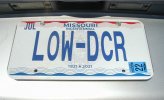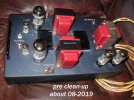Dynamics :
In almost every post I read up here, by seasoned F.M.s, we get the idea that SE amps lack dynamics. Recall how I essentially inferred and said that "99.99% of the amps were not cutting the mustard?? Well,
a lack of dynamic contrasting IS how most SE amps play back, and they flunk out !!
But I want to tell you all that
it does not have to be this way ( poor dynamic contrasting ) at all, in SE design. Of course, the amplifier designers all copy from each other, and rely on 100 year old text book theory,
and apply no new thought, so we get
world-wide mediocre performance. That is precisely what we have today in SE designed amplifiers.
Guess what ladies and gentlemen, some of us in audio know how to build beautiful, highly-dynamically-contrasting Single Ended amplifiers .
I certainly do. I build all of mine that way, starting with my very first from-scratch-designed DHT mono amps in 1982..
It takes a whole combination of design implementations, to preserve dynamic contrasting. This virtually
never gets done. Something is overlooked. So the public is largely unaware !! And when I tell them it can be done, I've done it myself, they think of me as either a liar or a nut case , and next, they often get offended ( at, with, and by ) me.
How do we get music's dynamic s and dynamic contrasting in a SE amp, you may ask? The answer is " not one or two things one does will attain that ".
Everything about the amp, has to be thoughtfully considered, and designed, to achieve said goal !! In tube amp designs I see, almost every time, " something is ( unconsciously ) overlooked ", and the amplifier's performance suffers.
I would generally suggest that 90% of the dynamic contrasting challenge, has answers found
in the amplifier's power supply design, and how energy is supplied to the circuit.
I have written this here before, and it is so supremely true :........ " In the end, we all listen to a music-modulated power supply. How good is it ? ".
I was lucky to have my first audio mentor, Mr. Robert W. Fulton, teach we well in
1982, about how to design my first amp.
Two rules he gave me.
1) Hopefully.... zero negative feedback and
2) all the chokes in the power supply have to be
20 Ohms in Direct Current Resistance,
or less, if I can find them " ( DCR ).
DCR is a huge factor in maintaining dynamics. A typical tube amp you see and use in 2021 will be
well over the 20 Ohms - the 1982 goal !!
Typically, " 10 Henry at 100 Ohms " is a commonly used choke or tube amp's inductor.
Five times too high.
What if I told you that a tube amplifier,
and the music dies, when the choke is even 10 Ohms in DCR ????? That is precisely how I hear it, in my amplifiers. Ten Ohms DCR won't cut the mustard. Go measure your choke right now - with an Ohm meter, amplifier drained, not activated !! See Post # 6' - 6005 Thread - the L1 and L2 photos ( 6.01 Ohms ). I wrote and reported this :
" I have made several important changes, since the original post, in a way, " designing by ear ".
First, I have changed the L1 and L2 power supply chokes, so as to go lower in DCR ( D.C. Resistances ). Originally I used Stancor C-2708s, which were 10 Ohms DCR each. I did not like the music's presentation with the pair. It was slow and boring. Now, you can view Hammond 159ZAs, as L1 and L2. They are only 6 ohms DCR each, or a total of 12 Ohms DCR between the dual rectifier tubes and the output transformers' primary windings. Now, the presentation is more lively, on time, and I have lost the sense of an amplifier in the system. I have found that chokes need to be as low in DCR as feasible, to get a great sounding, dynamic music presentation, from a tube amplifier.
How much do I believe in low DCR in a tube amplifier? Well take a look at my personalized State of Missouri ( USA ) car driver's license plates : "
View attachment 58236
Of course, DCR is of extreme importance, but there are
many many other things ( almost all
power supply design related ) that also needs to be
comprehensively addressed, to build, own and enjoy a world class amplifier !! Everything works in conjunction with all else !! The 2021 6005 amp will "have it all" in it's design - and my execution. In that thread ( on HFV's DIY Forum ) is the previously referenced 16 item list, which covers a lot. ( Post #75 ) Every single aspect listed.... is of importance. Short-change or leave
one thing out, and the amp's performance suffers. Its no longer my design.
By the end of this year, perhaps six of these 6005 amps will be in the public's hands. I am ( re ) building a new one for me, and two amps
unsolicited / by request / for new clients. The three remaining chassis - are for my close DIY audio friends.
It will be of interest to me, to get everyone's listening reactions !! I pretty much know what it is going to do, from my prototype's build in the ongoing 6005 article. This is exciting - for all six of us.
Jeff





